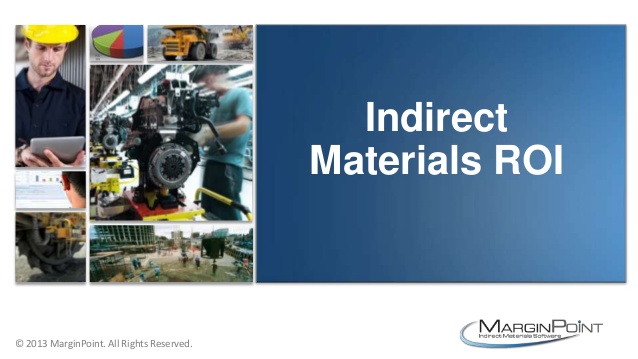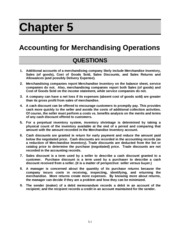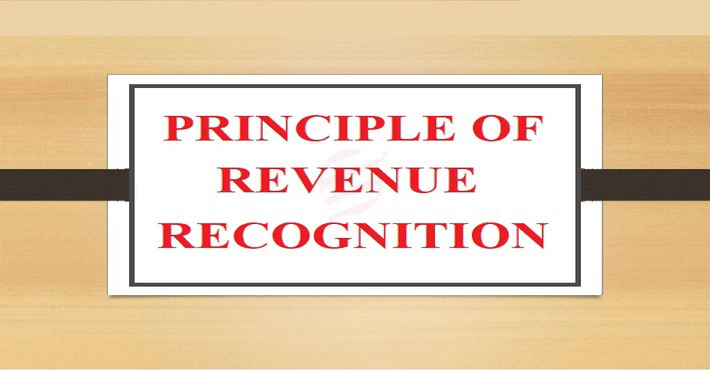Invoice Financing: A Guide to Boost Cash Flow Without Overdraft

With invoice factoring, the company sells its outstanding invoices to a lender, who might pay the company 70% to 85% up front of what the invoices are ultimately worth. Assuming the lender receives full payment for the invoices, it will then remit the remaining 15% to 30% of the invoice amounts to the business, and Invoice financing the business will pay interest and/or fees for the service. Since the lender collects payments from the customers, the customers will be aware of this arrangement, which might reflect poorly on the business. This mechanism for financing outstanding invoices is slightly different and known as “Invoice Factoring”.
- While the overall goal of invoice factoring is the same, choosing the right provider is critical.
- When compared to traditional credit options, an alternative invoice financier offers quick access to cashflow in lieu of your outstanding invoices.
- Invoice-based financing works when a lender gives you a portion of your invoices in cash immediately – usually within just a couple of working days.
- As mentioned above, this is where the Supplier carries the risk for payments from its Buyers.
Invoice financing lets businesses borrow capital from their unpaid customer invoices. This type of financing can make sense if you need to manage cash flow issues, pay short-term expenses or can’t qualify for a less expensive small-business loan. It describes an arrangement in which B2B companies use their unpaid invoices as collateral to borrow money from financial companies. As your business issues new invoices to customers or clients for goods or services provided, you utilise a slick online platform to inform your lender of the invoices raised. Lenders will then issue a portion of the invoice to you direct to your bank account.
What are the criteria for obtaining invoice financing?
Invoice financing is a financing solution which helps you turn outstanding invoices into cash. SMEs and start-ups typically have an unproven or lower credit rating, especially if they are still trying to establish themselves in their industry. Therefore, these companies may benefit more from invoice financing than accounts payable financing. In some cases, we can simply advance you 100% of your outstanding invoices. In return, you pay the lender back weekly over a set period of time—often around 12 weeks—until the advance gets cleared.
- The process begins with a business filling out an application, often online, and sharing details about the invoices it wants to finance.
- The invoice financing company charges a 0.50 percent discount fee as well as a 1 percent weekly fee.
- Ask yourself and potential providers how much cash you need and how often, how long customers take to pay invoices, how reliable and creditworthy they are, and how much you are willing to pay for invoice financing.
- Many accounts receivable financing companies link directly with a company’s accounts receivable records to provide fast and easy capital for accounts receivable balances.
- Invoice financing is one of the most expensive financing options for small businesses.
NetSuite’s Cash 360 dashboard automates cash flow forecasting and gives companies a better understanding of their near-term cash requirements and how much they’re likely to collect. This helps inform decisions, such as whether invoice factoring is required or not. Invoice factoring is similar to invoice financing in that they’re both mechanisms for getting cash quickly, and often the same financial companies will offer both kinds of financing. However, in invoice factoring, the financial company actually buys the invoice from a business and takes responsibility for collection. This has the advantage of relieving businesses from time consuming collections efforts. That said, it also involves the risk of ceding control of an important customer interaction to a third party.
How do you use invoice financing to boost your cash flow without overdraft?
If you’re running short of capital or urgently need to meet upcoming expenses—like taxes, payroll, or even getting started on your next project—then invoice financing can ease the burden on your business. Many merchants have to wait up to 90 days for invoices to be paid for the money they have earned when selling via an online marketplace, so freeing up cash to reinvest in their business can be difficult. Banking Circle offers receivables financing to the merchants of financial tech companies, such as Payment Service Providers and Acquirers, via its Instant Settlement solution. You may have heard some bad things about invoice factoring, potentially from someone who has used it before and had a bad experience. While there are certainly better factoring companies than others, and some that will try to take advantage of you, here are a few things about invoice factoring that aren’t true.

Invoice financing can offer a good alternative to bank loans or credit lines for companies that can’t readily access those more traditional forms of capital. In this case, a business uses its outstanding invoices as collateral for borrowing money from a financial institution or invoice discounting company. The business retains control over the collection of invoice payments from clients. When clients pay their invoices, the business repays the borrowed amount along with any fees or interest to the financing company. Invoice financing, often called accounts receivable financing, is a type of asset-based financing solution that allows business owners to free up unpaid invoices. Invoice financing companies advance your cash collateralized by your accounts receivable, giving you an excellent way to put money back into your business.
Pros and cons of factoring
The costs of factoring can be much higher than for other types of financing. There are often some ways to reduce costs, but these vary by factoring company. For example, borrowers in certain industries (such as healthcare) may receive lower interest rates than others.
As we’ve mentioned, invoice financing can be an expensive way to receive funding for your business but can be looked at as a cost of doing business. For some businesses owners and industries, it is essentially the cost of having cash on hand now to continue operations, instead of later. That’s essentially what accounts receivable financing—also known as invoice financing—can do for your business. Competitive rates – In addition, since the bank has its own funds, it can offer the business very competitive rates. Unlike many independent factoring companies who work with multiple funding sources, a bank acts as a direct source of funds and eliminates the middleman. For business owners, it can be difficult to identify whether factored receivables are subject to taxes payable to the federal government.
Invoice Financing: Definition, Structure, and Alternative
A significant gap between income and managing real cash flow could be one major issue, particularly if you have clients that want a “liberal” payment schedule and delay till the last day to pay. To apply for invoice financing, there is a lot of paperwork you need to prepare. The application process therefore requires a considerable amount of back-and-forth communication with the financier.

Stenn now owns the invoice, including the responsibility for chasing Importer Ltd for payment. Invoice financing is requested predominantly by Suppliers but Buyers can also arrange a service known as reverse factoring, which is explained below. There comes a time in the life of every small business when cash gets a little tight and decision makers look for outside sources of funding.
For more complex transactions, or if you perform very niche services or produce very specialist products, you are likely to pay more. While this can be advantageous in the sense that you receive a fixed sum and you don’t have to make any repayments to your lender, you need to be aware of some nuances. In this case, because your lender becomes the creditor, your clients will pay your lender directly and your clients will be aware you are financing your debtor book position. Your lender will also be able to contact clients directly to follow up on late payments per their own policies and credit control processes.
The Positive Impact of Fintech in Serving The Underserved Community – Yahoo Finance
The Positive Impact of Fintech in Serving The Underserved Community.
Posted: Tue, 08 Aug 2023 07:00:00 GMT [source]
Not only this but invoice financing companies will vet your clients thoroughly before agreeing to advance their invoices. Choose from a funding and back-office platform for an all-in-one solution, or just funding to complement existing systems. Our application process for invoice finance solutions is designed to be straightforward, allowing businesses to quickly access much-needed funds from their outstanding invoices. Unlike receivables financing, receivables factoring hands over control to a third-party factoring company as effectively a business will sell its outstanding invoices to them. The factoring company then manages the collection and processing of invoices, and often takes on the responsibility of credit control. Because it’s a sale, not a loan, it doesn’t impact your credit like traditional bank financing.
The amount you are paid varies but is usually around 85% of the total invoice amount. When your client or customer has paid the outstanding invoice, you keep the difference less interest and fees owed to the lender. With invoice factoring, the invoice factoring company takes on those invoices and is responsible for collecting payment. Invoice financing offers a cash advance against receivables (invoices) that customers are due to pay within an agreed time period. Most terms request payment to be made between 30 and 90 days after the date the invoice is issued, which leaves businesses vulnerable to unexpected costs that may arise while waiting for the money to come in. The process of invoice financing varies depending on the type and provider you choose, but generally, it involves you issuing an invoice to your customer as usual and sending a copy to the factor or lender.

Invoice financing is a financing solution for businesses that need a quick cash injection. It is particularly useful for small business sellers negatively impacted by a long delay between sales and payment. Invoice factoring is a business financing tool that offers quicker funding than many other types of loans. Factoring also makes it easier for business owners with questionable credit to get funding, because the owner’s credit isn’t really important – it’s their clients’ creditworthiness that matters. In this instance, the factoring company takes responsibility for any non-paying customers and they cannot ask you for payment.
It is more expensive than traditional bank financing and is thus most often used by businesses that don’t have access to bank financing in the amounts they need. The process begins with a business filling out an application, often online, and sharing details about the invoices it wants to finance. The businessperson who is handling the application will have to show some form of identification, which could be a driver’s license. It is usually necessary for the company to submit other documentation as well, such as avoided business check, bank statement or financial statements. Invoice financing is a procedure by which businesses can obtain loans on unpaid bills.
